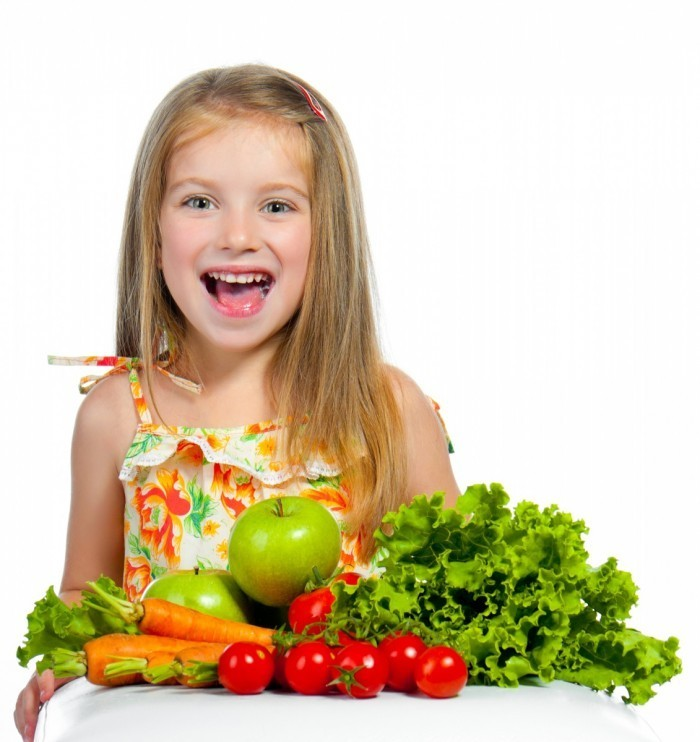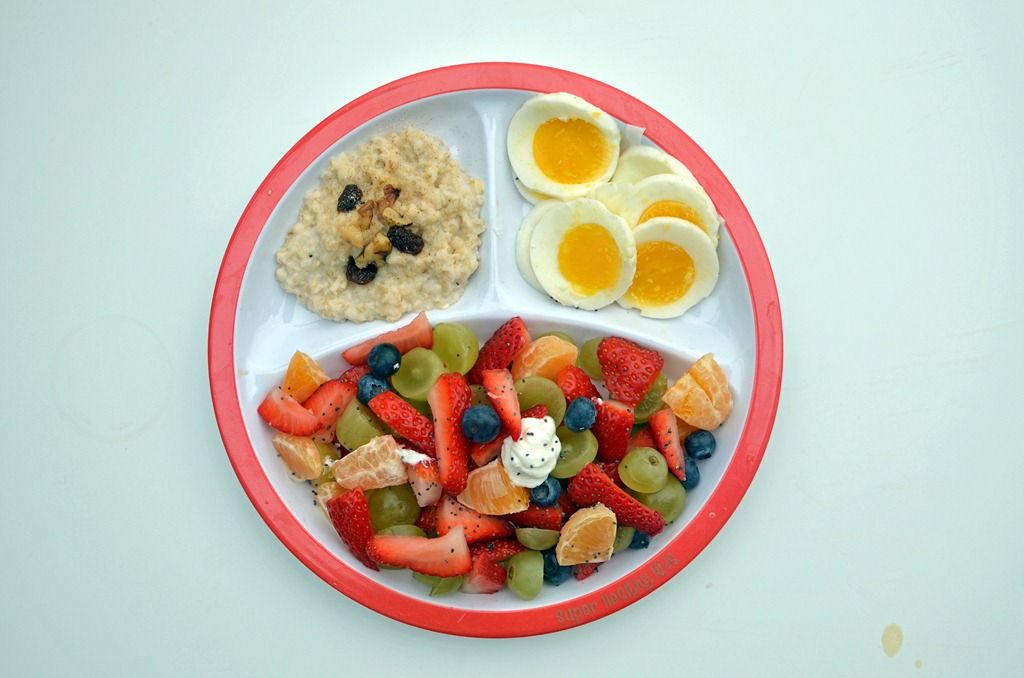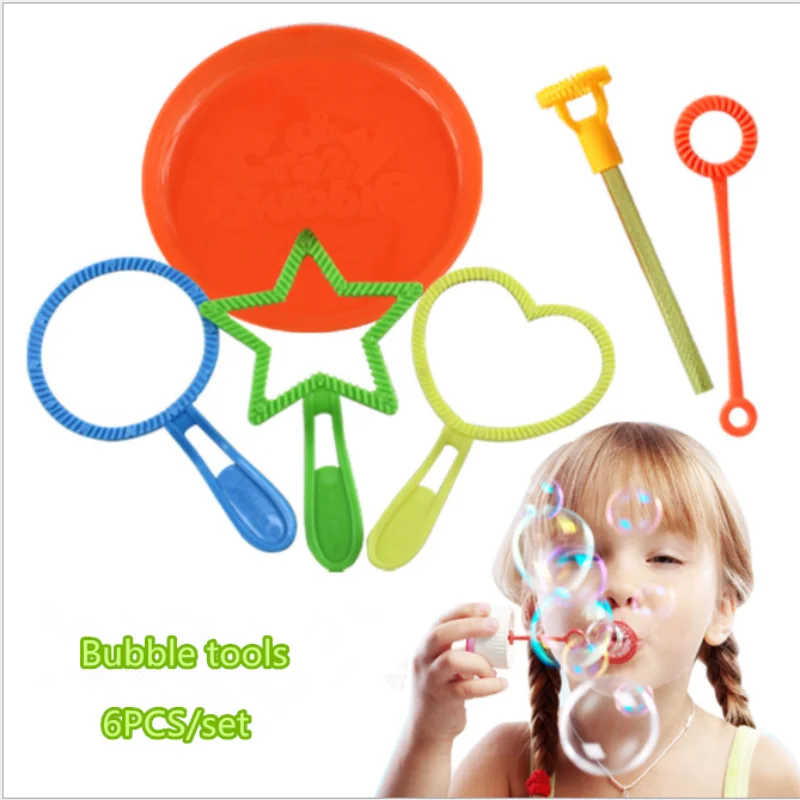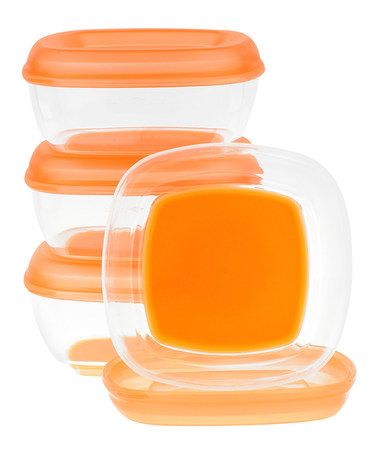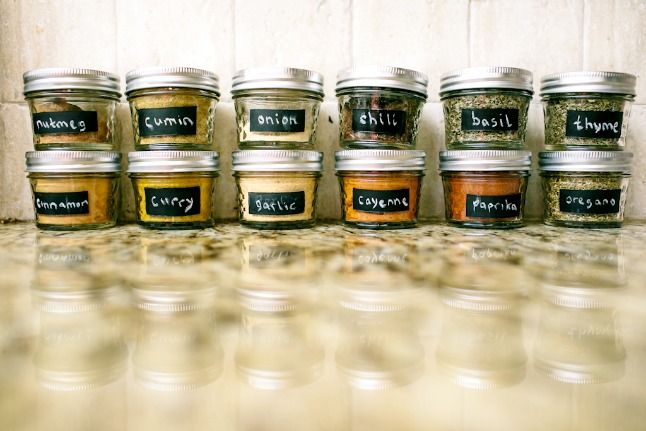Healthy food for 3 years baby
Easy Feeding Guide: What Three Year Olds Eat
Inside: What do three-year-olds eat? Here’s an easy guide that shows you what foods three-year-olds need to eat to grow and thrive. You’ll leave with a good understanding of what to feed your toddler!
When my first son turned 3, I also had a 1-year-old coming up behind him. I was all toddler-focused and sleep-deprived, but I was doing my best to provide balanced meals (between bowls of o’s).
It may feel overwhelming to feed a three-year-old, after all, maybe they have real opinions about what they have on their plate and whether they will eat it. Maybe it seems like your “threenager” toddler, isn’t eating. I want to help you know what to serve your child so that you can feel confident that you are giving them choices that will help them grow and thrive.
How Three-Year-Olds Eat
Three-year-olds are amazing. They are playing, learning, and interested in copying so much of what you do. They may have strong opinions about what they will and won’t eat, and that’s actually okay.
They are also increasingly interested in using utensils and learning how they work (even if they still choose to primarily eat with their hands). This helps kids stay interested in meals. You might find adding new utensils to a meal may increase their interest in eating foods.
If your three-year-old is unreliable in their eating, congratulations! They are normal. One day they may eat a lot, one day they may eat a whole pizza. It can be hard to figure out how much to make for dinner, but this is a good sign that your child is listening to how much their body needs to eat.
By now your child needs to be eating table food, meaning, food that the family is eating. Foods like purees, puffs, or “baby foods” should be behind them unless your child has a specific need for these foods. If your child is still unable to eat solid food or eat a variety of textures, it may be time to learn more about help for families with picky eaters.
If you’ve noticed that your three-year-old is becoming increasingly picky, that can be common.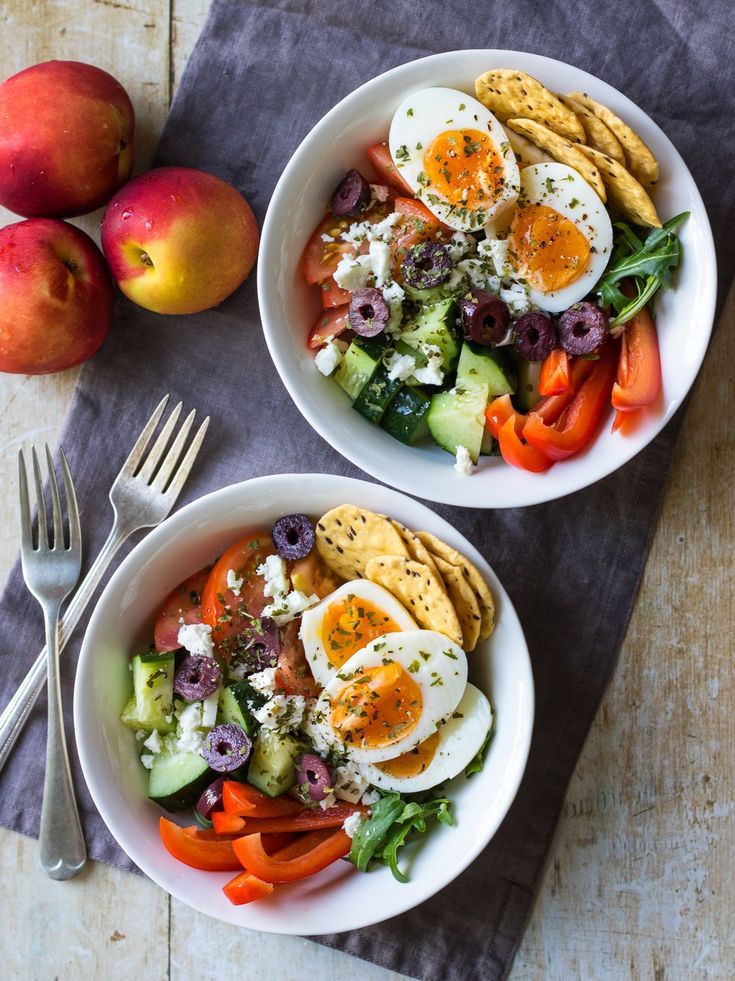 Often picky eating emerges in toddlerhood.
Often picky eating emerges in toddlerhood.
Related: Get your Picky Toddler on the Road to Eating More Foods
What Balanced Meals Do Three-Year-Olds Need to Be Served?
Preschoolers and toddlers (sometimes three-year-olds are both, right?) often display love for some foods and hatred toward others. Preschoolers still have small stomachs though. They need balanced options in a feeding schedule or routine to get the nutrients they need and keep them from asking for snacks every 10 minutes.
Here is the magic meal and snack formula that makes it easier to feed your preschooler through all the preschooler issues that you face:
Protein food + fat source + fruit and/or veggie + energy food = balanced meal and snack
Let’s get into each of these so you know which foods are in which categories.
Protein foods that your three-year-old can eat (when cooked soft)
Protein comes in more than just meat. There are lots of protein foods that your three-year-old can eat.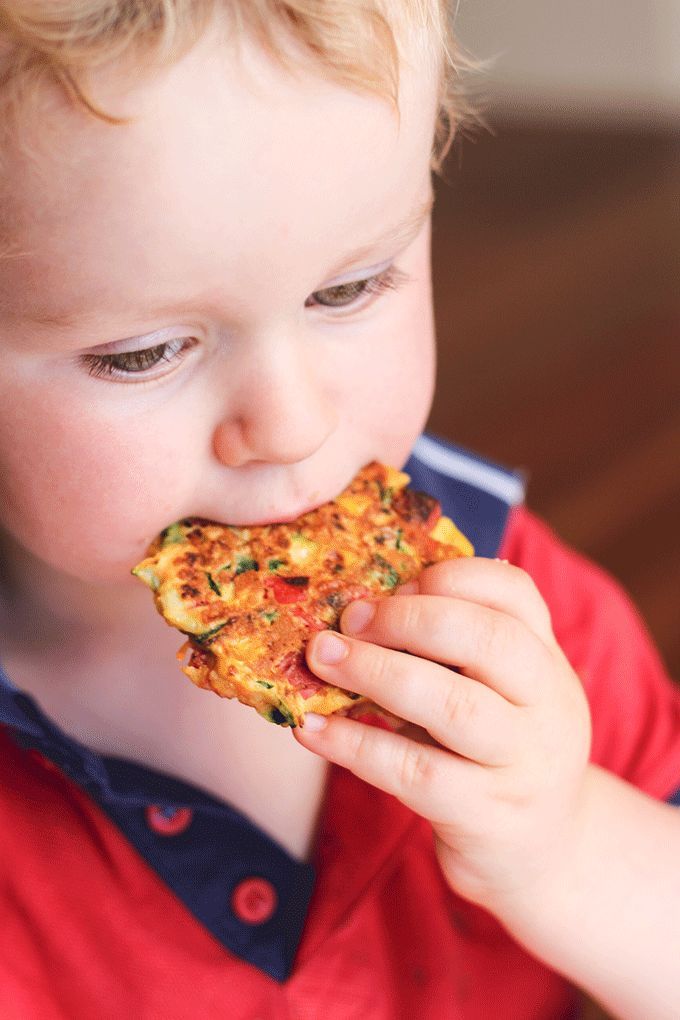 Make sure they are cooked soft and diced, or served in safe ways.
Make sure they are cooked soft and diced, or served in safe ways.
- Meatballs
- Eggs
- Chicken
- Fish
- Peanut butter or nut/seed butters (spread on a cracker or bread, or mixed into something)
- Ground up nuts or seeds mixed into other foods like yogurt or applesauce
- Beans
- Dairy: milk, cheese, yogurt
- Tofu
- Lentils
- Hummus
- Lamb
- Pork
- Beef
Serve a protein food at every meal and snack. This trick and having a toddler feeding schedule, can help toddlers not ask for snacks every 10 minutes!
Fat sources for your three-year-old
Preschoolers need fat for their brain development. They also need fat for energy, to keep them going throughout the day. We can serve foods that already have fat in them like meat or dairy, or we can add fat to our cooking and serving. Here are some great sources of fat for three-year-olds.
- Butter
- Coconut oil
- Avocado oil
- Avocado
- Full-fat dairy: milk, cheese, yogurt
- Nut and seed butters (spread on crackers or bread, or mixed into other foods)
- Fatty fish (salmon, sardines)
- Ghee
Fruits and veggies for three-year-olds
Your three-year-old can eat any fruits and veggies that you serve with your own meals and snacks, as long as they are prepped in a safe way.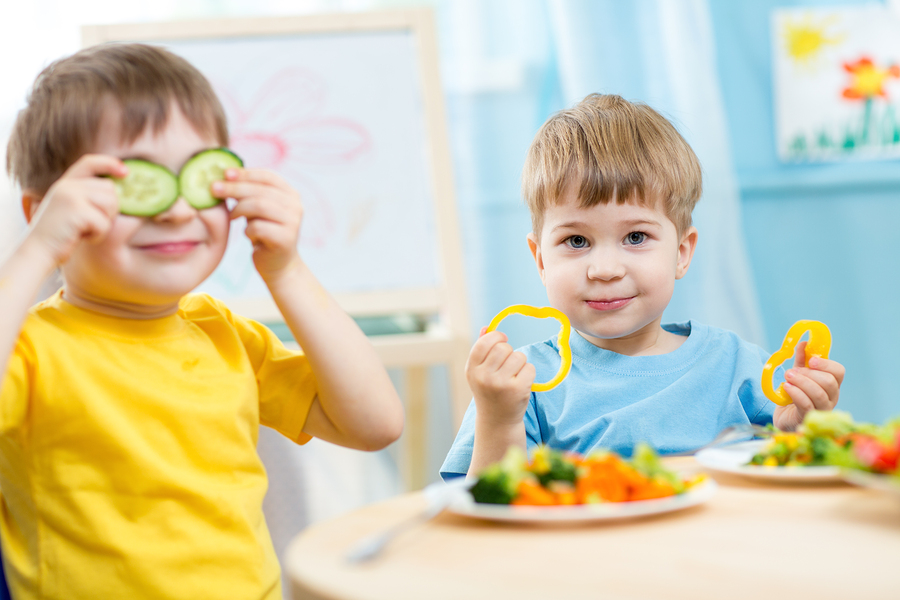 The more variety they see, the more likely they will be to try new foods and keep eating a larger variety of foods. The more often your preschooler sees fruits and veggies, the better. Serving a green and an orange veggie daily helps them get enough vitamin A and other important vitamins and minerals.
The more variety they see, the more likely they will be to try new foods and keep eating a larger variety of foods. The more often your preschooler sees fruits and veggies, the better. Serving a green and an orange veggie daily helps them get enough vitamin A and other important vitamins and minerals.
Here’s a short list of green and orange veggies to focus on:
- Broccoli
- Cooked greens
- Carrots (served cooked soft, shredded, or in thin matchsticks)
- Sweet potatoes
- Pumpkin
Other fruits and veggies like bell peppers, oranges, strawberries, and kiwi fruit help your child get the vitamin C they need to absorb iron into their body.
If you can, add some color to every snack. That means adding a fruit and/or veggie whenever you serve food. Adding color helps them get the nutrients they need and helps keep them familiar with veggies and fruits.
Read about the best vegetables and fruits for kids.
Energy foods for three-year-olds
Three-year-olds are busy! That’s why we need to provide plenty of energy foods like whole grains, starchy veggies, and fruit.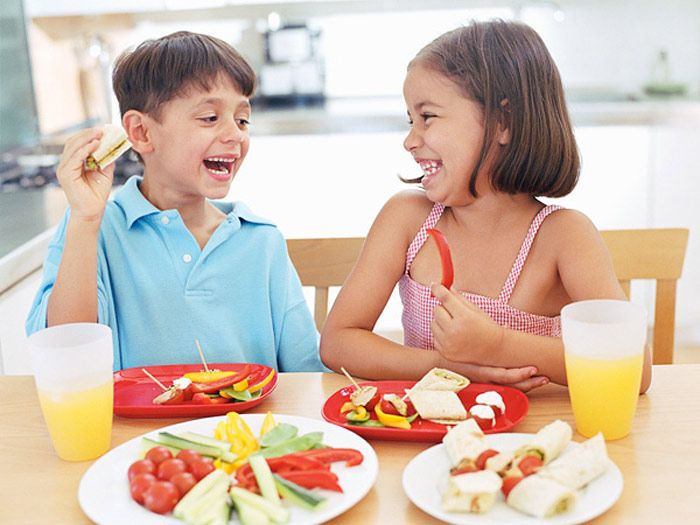 It’s easy to find yourself in a constant cracker and granola bar cycle with preschoolers. I’m not down on granola bars, but we can’t stop serving a variety of foods, just because our preschoolers are in love with a specific packaged snack. In addition to some packaged snacks, see how many other energy foods you can include in your child’s diet this week.
It’s easy to find yourself in a constant cracker and granola bar cycle with preschoolers. I’m not down on granola bars, but we can’t stop serving a variety of foods, just because our preschoolers are in love with a specific packaged snack. In addition to some packaged snacks, see how many other energy foods you can include in your child’s diet this week.
- Beans/peas/lentils
- White potatoes
- Bread
- Oats (cooked)
- Sweet potatoes
- Quinoa
- Dried fruit that has been cut into small pieces, cooked and softened, or cooked into things
- Homemade muffins
Free Child Feeding Guide: From Stress to Success: 4 Ways to Help Your Child Eat Better Without Losing Your Mind
Prevent choking when deciding what to serve your three-year-old
Even three-year-olds are still at a higher risk for choking, so we need to modify.
Here are some common choking hazards for kids under 4:
- Raw veggies
- Marshmallows
- Whole grapes and cherry tomatoes
- Popcorn
- Whole nuts and seeds
- Tough meat
- Chunks of nut butters
- Hot dogs and sausages
- Chunks of cheese
- Gum
- Hard candy, chewy candy
To prevent choking
- Modify – soften or dice
- Sit – make sure your child is sitting in a chair while eating
- Avoid some foods that cannot be modified
- Be prepared if something does happen
What do three-year-olds eat?
Here is a sample menu for the foods that could be served to your three-year-old. I haven’t included portion sizes here, because it’s so important that your preschooler be allowed to choose what portion sizes are right for them. It’s the child’s job to decide how much to eat!
I haven’t included portion sizes here, because it’s so important that your preschooler be allowed to choose what portion sizes are right for them. It’s the child’s job to decide how much to eat!
Start with small portions, about 2 tablespoons of each type of food on their tray or plate. They will let you know if they want more of a specific type of food. If they don’t want to eat, don’t pressure them.
Sample menu for a three-year-old
Breakfast: peanut butter toast with sprinkles, banana, and milk
Morning snack: full-fat yogurt, thinly sliced apples
Lunch: tuna sandwich, fruit, and matchstick carrots
Afternoon snack: hummus, crackers, and thinly sliced veggies
Dinner: spaghetti and meatballs with broccoli and salad
Looking for more meal ideas? See our blog for healthy toddler lunches and snack ideas for kids.
Feeding My Three-Year-Old Is Really Hard for Me
Actually figuring out what to feed your three-year-old is only the half of it.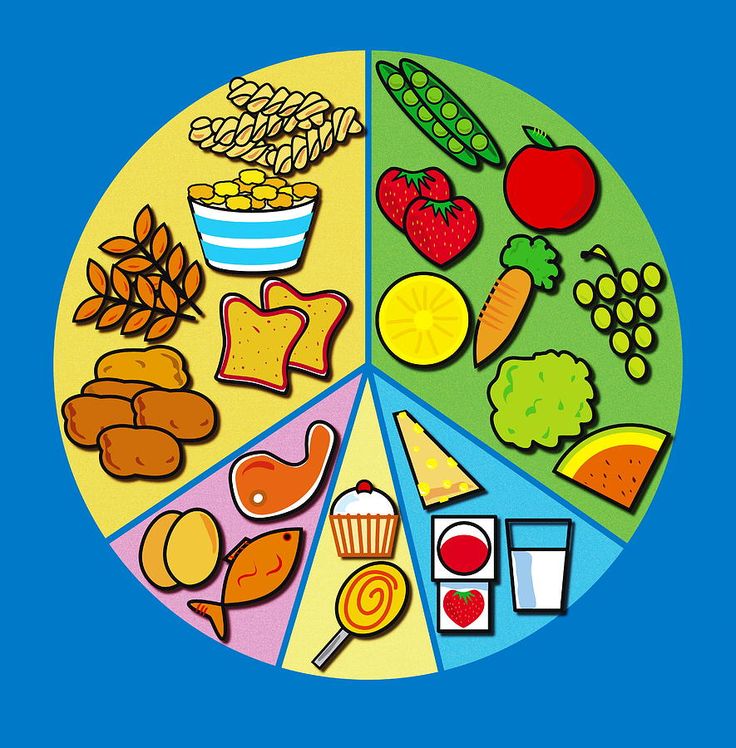 Feeding preschoolers can be confusing, tricky, and defeating.
Feeding preschoolers can be confusing, tricky, and defeating.
If you’re struggling with your child because they won’t eat any of these foods, you may have a three-year-old picky eater. Here are a few places where you can find help for your specific issue, whether you consider your three-year-old a toddler or a preschooler, all of these articles will help!
- Getting your toddler to eat: the 1 most important thing you can do
- Everything you need to do if your toddler is not eating
- The eating routine that will end your food battles
If you need more help, here’s help for a few commonly asked questions:
- My toddler is throwing food!
- My toddler is not eating dinner
- My toddler is refusing to eat anything but milk
Feeding & Nutrition Tips: Your 3-Year-Old
Log in | Register
Ages & Stages
Ages & Stages
Listen
Español
Text Size
It's important to help your children develop a healthy attitude toward eating at an early age. By age three, children are less likely to use eating—or not eating—to be defiant. Generally, (although almost certainly not always), they will learn to better interact, participate, and enjoy family meals.
By age three, children are less likely to use eating—or not eating—to be defiant. Generally, (although almost certainly not always), they will learn to better interact, participate, and enjoy family meals.
5 Tips for Parents:
Accept strong preferences about foods. Your three-year-old may be enthusiastic about eating, but he or she may have very specific food preferences. Some preferences may vary from day to day. For example, your child may gobble down a particular food one day, and then push away the same food the next day. She may ask for a certain food for several days in a row, and then insist that she doesn't like it anymore. As irritating as this behavior can feel, it is very typical for a three-year-old. It is best not to make an issue of it. Instead, continue to offer a variety of healthy foods, and let your child choose which of them and how much he or she will eat.
Encourage, but don't force trying new foods.
 Offer very small amounts of a new food for your child to taste (an "adventure bite"), along with other foods he or she already likes. Do not expect your child to eat a full portion of an unfamiliar food.
Offer very small amounts of a new food for your child to taste (an "adventure bite"), along with other foods he or she already likes. Do not expect your child to eat a full portion of an unfamiliar food.Offer nutritious food choices at every meal. As a parent, your job is to make sure that your three-year-old has nutritious food choices at every meal. After offering healthy options at the table, let him or her make the decision of how much to eat. If your child shows picky eating preferences—resisting vegetables, for example—don't get discouraged or frustrated. Keep offering a variety of healthy foods, even if your child did not like them before. Developing a taste for foods can require up to 15-20 repeated exposures. This is also an important time to establish healthy snacking and meal habits.
Meals can be simple and nutritious. Remember, meals at this age don't need to be fancy. In fact, most three-year-olds prefer simpler preparation.
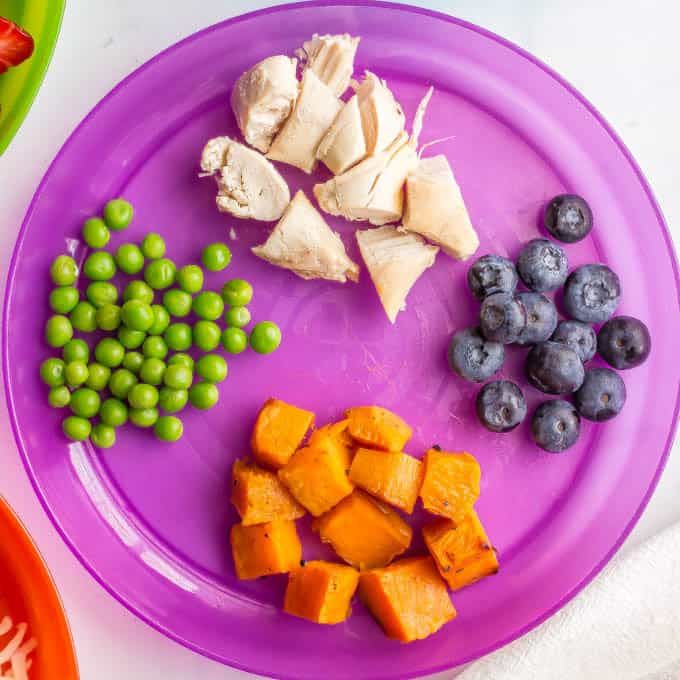 If you only a few minutes to prepare a meal, try simple meals that include a protein source, whole grain, fruit, vegetable, and dairy. For example, a turkey or peanut butter sandwich, a serving of carrots, an apple, and a glass of milk. A simple lunch like this takes less time to prepare than driving through a fast-food restaurant—and it is much healthier!
If you only a few minutes to prepare a meal, try simple meals that include a protein source, whole grain, fruit, vegetable, and dairy. For example, a turkey or peanut butter sandwich, a serving of carrots, an apple, and a glass of milk. A simple lunch like this takes less time to prepare than driving through a fast-food restaurant—and it is much healthier!Turn off the TV—especially at mealtimes. Television advertising can be a big challenge to your three-year-old's good nutrition. Young children are easily influenced by ads for unhealthy foods like sugary cereals, fast food, and sweets. The best way to avoid this is put in place a "media curfew" at mealtime and bedtime, putting all devices away or plugging them into a charging station for the night.
Additional Information from HealthyChildren.org:
Feeding & Nutrition Tips: 4-to 5-Year-Olds
5 Great Reasons to Cook with Your Kids
Preschoolers' Diets Shouldn't Be Fat-Free: Here's Why
Sample Menu for a Preschooler
15 Tips to Survive the Terrible 3's
- Last Updated
- 12/29/2016
- Source
- Section on Obesity (Copyright © 2016 American Academy of Pediatrics)
The information contained on this Web site should not be used as a substitute for the medical care and advice of your pediatrician.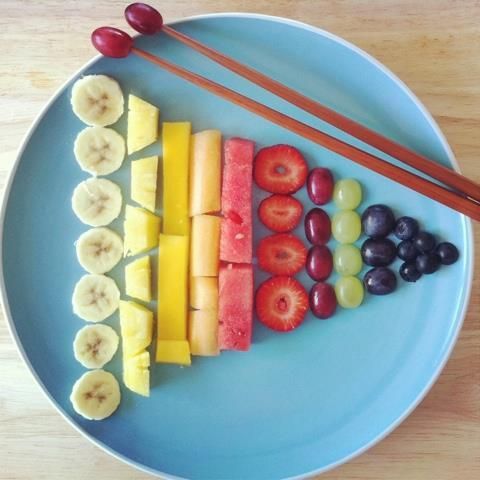 There may be variations in treatment that your pediatrician may recommend based on individual facts and circumstances.
There may be variations in treatment that your pediatrician may recommend based on individual facts and circumstances.
Follow Us
Back to Top
how to feed a child aged 3-7 years - "Healthy Child Internet Cabinet"
Nina Anatolyevna Toritsyna
Chief Children's Dietitian of the Health Department of the Administration of Yekaterinburg
From birth, the baby, along with food, receives useful substances that form it immunity and ensure normal development. At preschool age, proper nutrition is also very important for the child to endure school loads in the future comfortably, be healthy and active.
Most children aged 3 to 7 spend most of their time in kindergarten, which is responsible for organizing a balanced diet in accordance with age. It is necessary to observe the principles of rational nutrition at home:
Important: strict adherence to the diet!
- the menu should be varied;
- nutrition should supply the child's body with energy, trace elements, vitamins and other useful substances;
- food must be properly handled and prepared (boiled, steamed, stewed, baked).
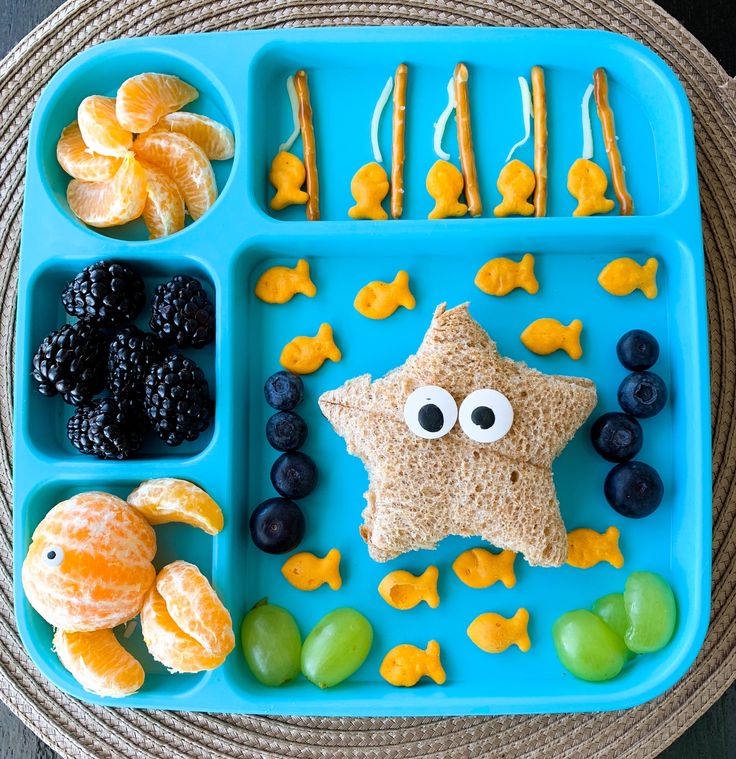
In order for the child to grow up active, mobile and healthy, it is important for parents to provide his menu with the main useful substances and monitor the sufficient number of calories :
| 3 years | 4-6 years | 7 years 900 32 9004
| Where are kept | |
| Proteins | Animal proteins: meat, fish, milk and dairy products, eggs. Vegetable proteins: bread, cereals, legumes, vegetables | |||
| Fats | Butter and vegetable oil, milk and dairy products, meat, fish | |||
| Carbohydrates | Sugar, fruits, confectionery |
In addition to the above nutrients, the child should receive trace elements and minerals .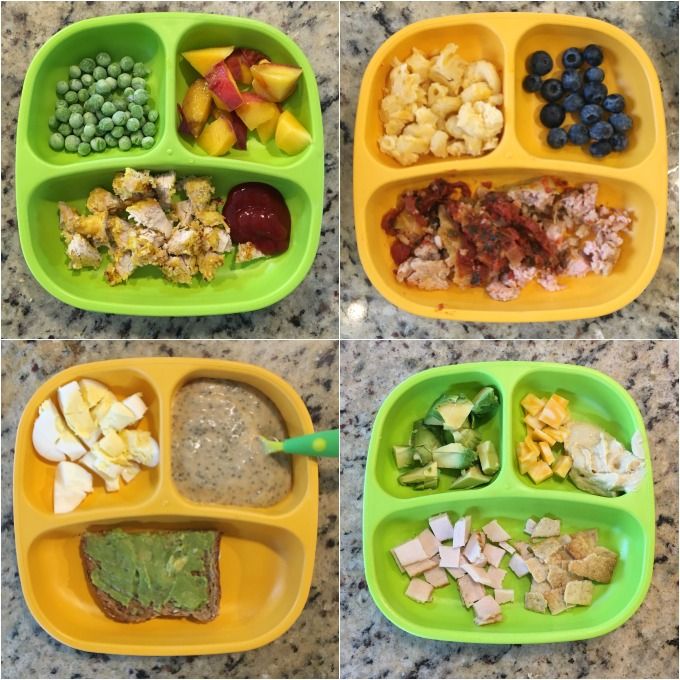 They are responsible for the proper development and functioning of the whole organism.
They are responsible for the proper development and functioning of the whole organism.
Table of the average daily norm of the physiological need of the body for the main micro and macro elements
| Name | Function | Source (products containing the element) | Daily allowance for children 3-7 years old |
| Calcium | Formation of bones and teeth, blood coagulation systems, processes of muscle contraction and nervous excitation. Normal heart function. | Milk, kefir, fermented baked milk, yogurt, cheese, cottage cheese. | 800-1100 mg |
| Phosphorus | Participates in the construction of bone tissue, the processes of storage and transmission of hereditary information, the conversion of the energy of food substances into the energy of chemical bonds in the body. | Fish, meat, cheese, cottage cheese, cereals, legumes. | 800-1650 mg |
| Magnesium | Synthesis of protein, nucleic acids, regulation of energy and carbohydrate-phosphorus metabolism. | Buckwheat, oatmeal, millet, green peas, carrots, beets, lettuce, parsley. | 150-250 mg |
| sodium and potassium | They create conditions for the emergence and conduction of a nerve impulse, muscle contractions and other physiological processes in the cell. | Table salt is sodium. Meat, fish, cereals, potatoes, raisins, cocoa, chocolate - potassium. | Not exactly established |
| Iron | A component of hemoglobin, the transport of oxygen in the blood. | Meat, fish, eggs, liver, kidneys, legumes, millet, buckwheat, oatmeal. | 10-12 mg |
| Copper | Necessary for normal hematopoiesis and metabolism of connective tissue proteins. | Beef liver, seafood, legumes, buckwheat and oatmeal, pasta. | 1 - 2 mg |
| Iodine | Participates in the construction of thyroid hormone, provides physical and mental development, regulates the state of the central nervous system, cardiovascular system and liver. | Seafood (sea fish, seaweed, seaweed), iodized salt. | 0.06 - 0.10 mg |
| Zinc | Essential for normal growth, development and puberty. Maintaining normal immunity, sense of taste and smell, wound healing, absorption of vitamin A. | Meat, ryaba, eggs, cheese, buckwheat and oatmeal. | 5-10 m |
A sufficient amount of vitamins in the daily diet of children is the key to the proper functioning of all vital processes.
Vitamins are practically not synthesized by the body itself, so parents must always control that they are supplied to the child in sufficient quantities with food. At the same time, their insufficient amount can cause a number of diseases.
Table of the average daily norm of the physiological need of the body for basic vitamins
| Name | Function | Foods containing the vitamin | Daily allowance for children 3-7 years old |
| B vitamins | |||
| IN 1 | Necessary for the normal functioning of the nervous system, cardiac and skeletal muscles, organs of the gastrointestinal tract. | Wholemeal bread, cereals, legumes (peas, beans, soybeans), liver and other offal, yeast, meat (pork, veal). | 0.8 - 1.0 mg |
| IN 2 | Maintains the normal properties of the skin, mucous membranes, normal vision and blood formation. | Milk and dairy products (cheese, cottage cheese), eggs, meat (beef, veal, poultry, liver), cereals, bread. | 0.9 - 1.2 mg |
| AT 6 | Supports the normal properties of the skin, the functioning of the nervous system, hematopoiesis. | Wheat flour, millet, liver, meat, fish, potatoes, carrots, cabbage. | 0.9 - 1.3 mg |
| AT 12 | Supports hematopoiesis and normal functioning of the nervous system. | Meat, fish, offal, egg yolk, seafood, cheese. | 1 - 1.5 mcg |
| PP (niacin) | Functioning of the nervous, digestive systems, maintaining normal skin properties. | Buckwheat, rice groats, wholemeal flour, legumes, meat, liver, kidneys, fish, dried mushrooms. | 10-13 mg |
| Folic acid | Hematopoiesis, body growth and development, protein and nucleic acid synthesis, prevention of fatty liver. | Wholemeal flour, buckwheat and oatmeal, millet, beans, cauliflower, green onions, liver, cottage cheese, cheese. | 100-200 mcg |
| FROM | Regeneration and healing of tissues, maintaining resistance to infections and the action of poisons. Hematopoiesis, permeability of blood vessels. | Fruits and vegetables: rose hips, black currants, sweet peppers, dill, parsley, potatoes, cabbage, cauliflower, mountain ash, apples, citrus fruits. | 45-60 mg |
| A (retinol, retinal, retinoic acid) | Necessary for normal growth, development of cells, tissues and organs, normal visual and sexual function, ensuring normal skin properties. | Liver of marine animals and fish, liver, butter, cream, sour cream, cheese, cottage cheese, eggs, carrots, tomatoes, apricots, green onions, lettuce, spinach. | 450-500 mcg |
| D | Participates in the processes of calcium and phosphorus metabolism, accelerates the process of calcium absorption, increases its concentration in the blood, provides deposition in the bones. | Butter, chicken eggs, liver, liver fat from fish and marine animals. | 10-2.5 mcg |
| E | Antioxidant, supports the work of cells and subcellular structures. | Sunflower, corn, soybean oil, cereals, eggs. | 5-10 mg |
Thus, the diet of a preschool child should include all food groups.
Diet
It is best to make a menu for a child a few days in advance, so parents can make sure that it turns out to be varied and contains the necessary nutrients.
Here is a sample menu for children from 3 to 7 years old for week :
| Day of the week | Breakfast | Lunch | Dinner | afternoon tea | Dinner | Second dinner |
| Monday | Buckwheat porridge with milk | Juice or fruit | Salad | Kefir | Carrot-apple casserole | Fermented milk product |
| Tuesday | Fish baked with vegetables | Juice or fruit | Vitamin salad | Milk | Curd casserole | Fermented milk product |
| Wednesday | Milk rice porridge | Juice or fruit | Beet-apple salad | Yoghurt | Omelet | Fermented milk product |
| Thursday | Macaroni with grated cheese | Juice or fruit | Green Pea Salad | Tea | Vegetable stew | Fermented milk product |
| Friday | Herculean milk porridge | Juice or fruit | Carrot-apple salad | Ryazhenka | Cheese pancakes with sour cream | Fermented milk product |
| Saturday | Barley milk porridge | juice or fruit | Cabbage-apple salad | Kefir | Fritters (pancakes) with jam | Fermented milk product |
| Sunday | Fish in Polish | Juice or fruit | Carrot salad | Milk | Vegetable casserole | Fermented milk product |
How to teach a child the correct behavior at the table?
From the age of 3, it's time to teach the baby to behave properly at the table. First of all, this will save him from the difficulties with food in kindergarten.
First of all, this will save him from the difficulties with food in kindergarten.
- The child should sit straight at the table without resting their elbows on the table.
- Teach your child how to hold and use a spoon, fork, and drink gently from a cup.
- The child should chew food thoroughly, chew with the mouth closed, and not talk while eating.
- Teach your child to first check if the food or drink is too hot, blow on the food if it is hot.
- Children should not be distracted by television or toys while eating. The child must be calm.
- Teach your child etiquette: say "thank you", get up from the table when he is allowed, wash hands before eating.
And remember: your personal example in everything is the main thing!
Kindergarten vegetable soufflé recipe
Delicate vegetable soufflé can be prepared for lunch as a second course for a baby or as a main course or a side dish for dinner.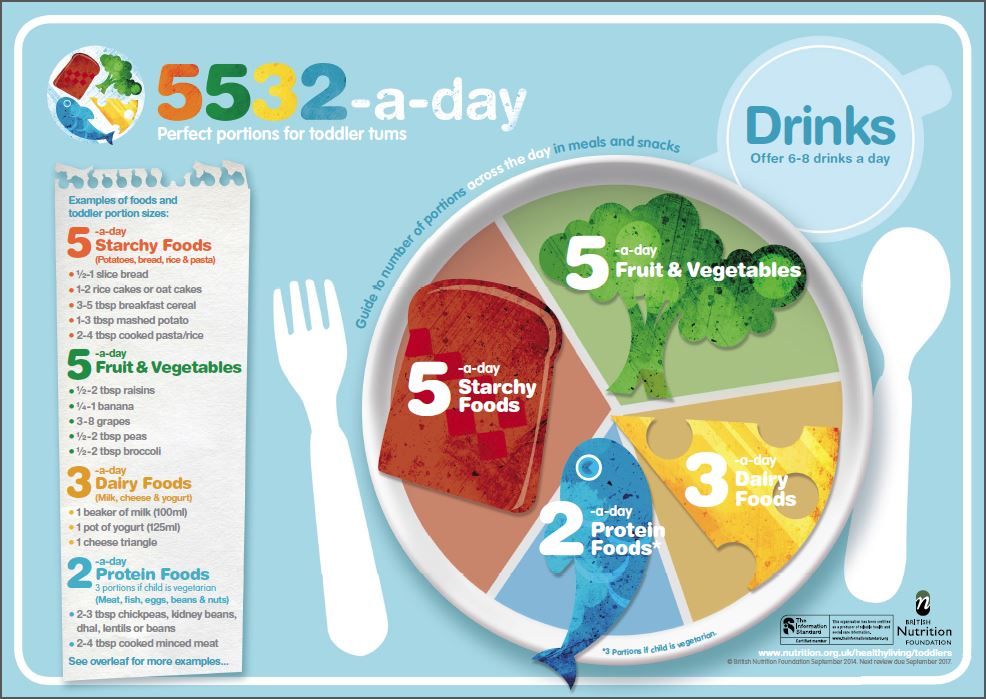
- General\Active cooking time: \
- Rating: 5 / 5 2 reviews Read more about the rating
★★★★★
2
Rate recipe
- Servings: 2 servings
- Calories (100g): 92 kcal
- Price: very economical
Ingredients:
- Carrot - 200 g
- Milk - 30 ml
- Butter - 15 g
- Cauliflower - 180 g
- Green peas - 80 g
- Sugar - 10 g
- Egg - 1 pc.
- Milk - 90 ml (for sauce)
- Butter - 15 g (for sauce)
- Flour - 15 g (for sauce)
- Water - 20 g (for sauce)
- Salt - to taste (for sauce)
Preparation: Step 1
-
Technological card No.
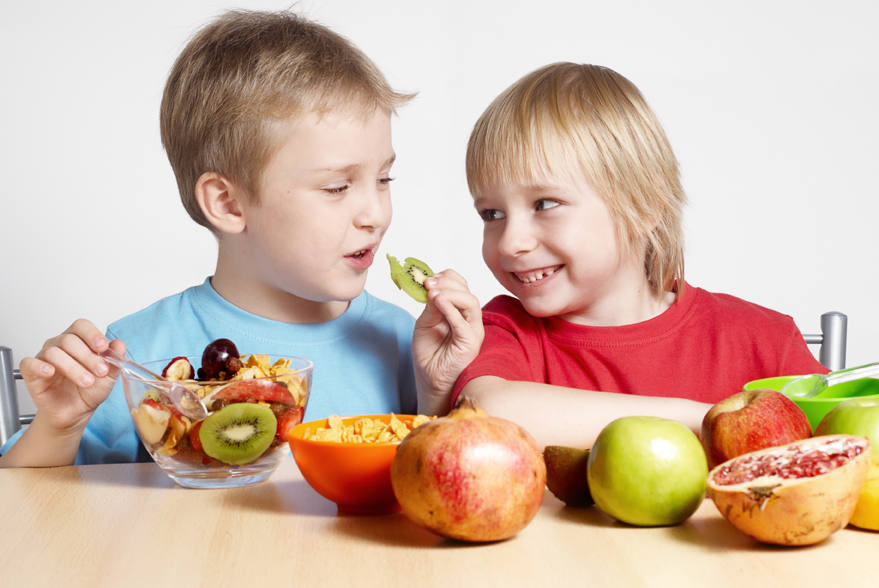 163.
163. -
Step 2
And here is how such a vegetable soufflé is prepared in kindergarten.
-
Step 3
To prepare a vegetable soufflé, we need the following ingredients: cauliflower, carrots, green peas, butter, egg, milk and some sugar.
-
Step 4
Wash, peel and cut the carrots into thin rings.
Place in a frying pan, add butter, milk and simmer until tender.
-
Step 5
Divide the cauliflower into florets and boil in boiling water with green peas until tender, 8-10 minutes.
-
Step 6
Drain the vegetables in a colander.
-
Step 7
While the vegetables are cooling slightly, prepare the milk sauce. To prepare it, we need milk, butter, flour, water and salt to taste.
-
Pitch 8
Spasser flour in butter.
-
Step 9
Pour hot milk with water and simmer for 7-10 minutes while stirring.
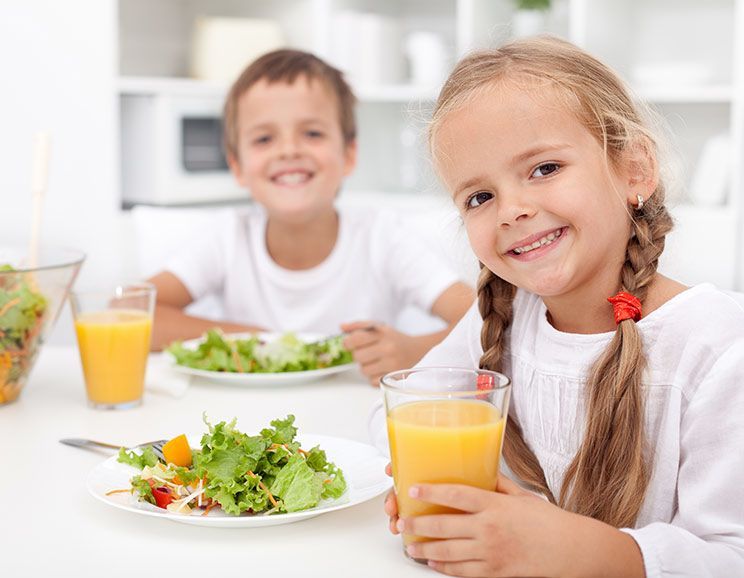
Learn more

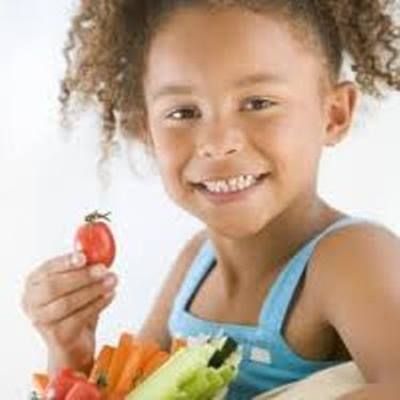 Maintains acid-base balance in the blood.
Maintains acid-base balance in the blood. 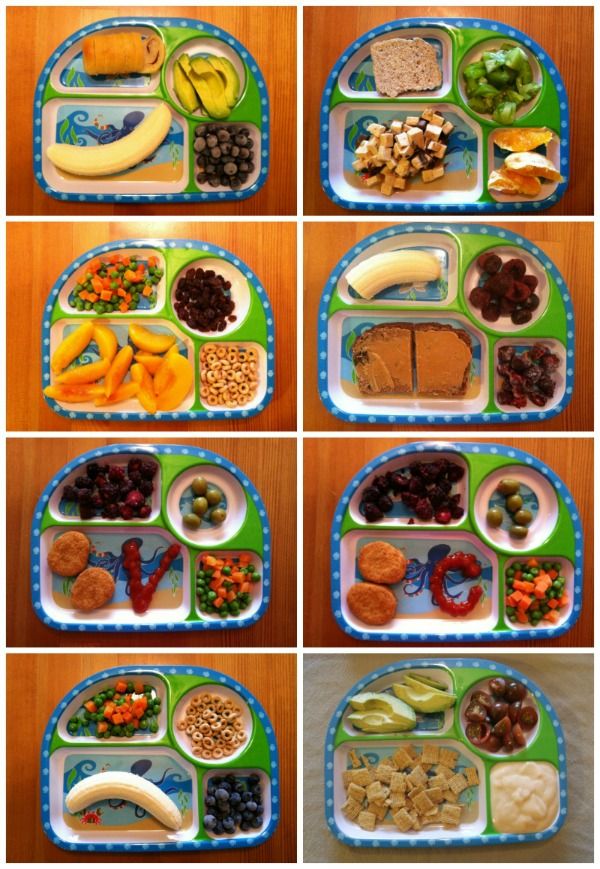 Quince, figs, dogwood, peaches, blueberries, rose hips, apples.
Quince, figs, dogwood, peaches, blueberries, rose hips, apples. 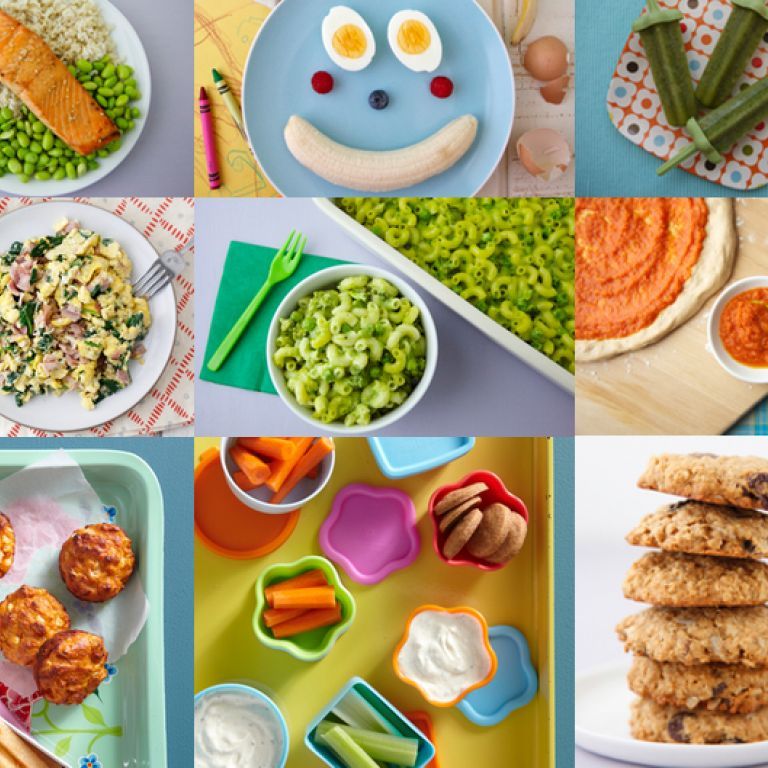
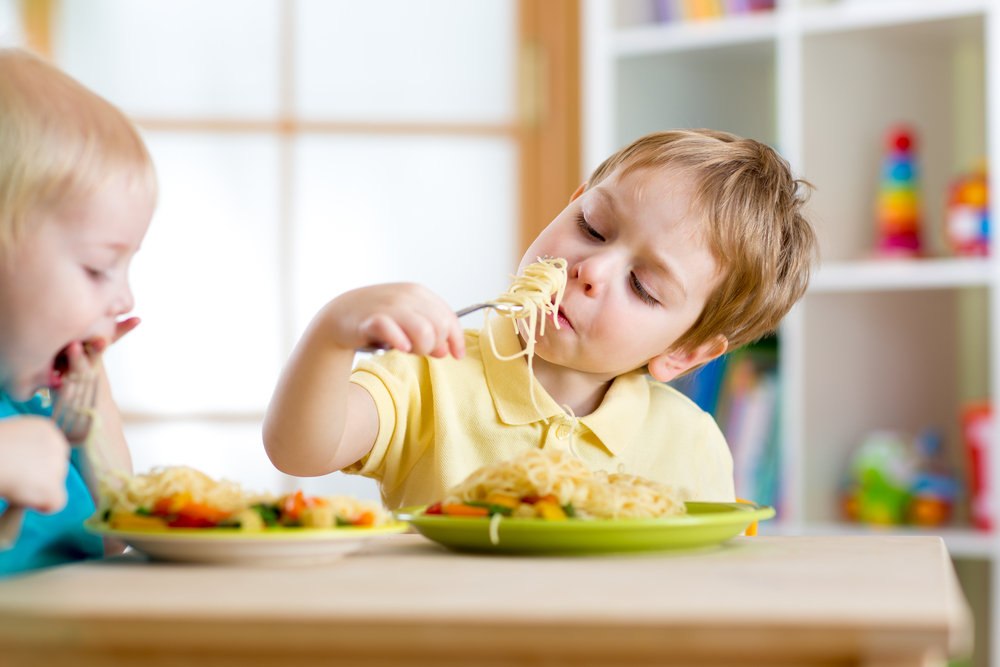 Participates in carbohydrate metabolism.
Participates in carbohydrate metabolism. 